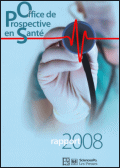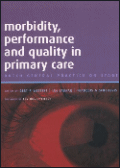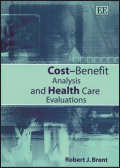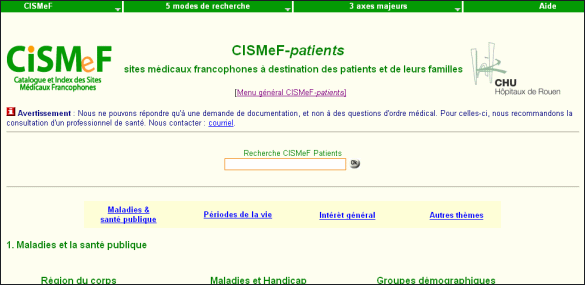LU POUR VOUS D'OCTOBRE 2008 : livres du mois - sites du mois - working papers
Tous les lu pour vous
LES LIVRES DU MOIS
Office de prospective en santé, rapport 2008.
Spira A., Moutet F., Marsault C. et al.
Paris : Editions de santé. Les Presses de SciencesPo, 202 p.
Coordonné par la chaire santé de Sciences-Po, ce premier rapport de l'Office de prospective en santé (OPS) rassemble plusieurs travaux réalisés par des experts du monde de la santé, sur l'évolution des systèmes de santé d'ici 2025. Il montre que le système de santé français est bel et bien en rupture organisationnelle et concernant le devenir de l'industrie des produits de santé, il parie d'ici les 20 prochaines années sur une forte évolution du disease management avec une industrie proposant de plus en plus de services autour du produit...
Le quotidien de la psychiatrie : sociologie de la maladie mentale.
Velpry L.
Paris : Armand Colin. 2008. 331 p.
La psychiatrie publique française est en crise, on le sait. La prise en charge de pans entiers du malheur social se télescope avec le manque de psychiatres, de moyens ou de structures alternatives à l'hospitalisation. Des faits divers dramatiques sont mis en avant par les médias et la criminalisation des malades mentaux est à l'ordre du jour. Mais que savons-nous du quotidien de la psychiatrie ? Quels sont les pratiques des professionnels, les parcours et les modes de vie des patients ?. Cette enquête sociologique de plusieurs années dresse un portrait précis du monde ordinaire de la psychiatrie et des différentes façons de vivre avec la maladie mentale dont témoignent professionnels et patients.
Malaise en psychiatrie : le triomphe de la confusion.
Robin R.
Paris : L'Harmattan. 2008. 252 p.
Les déterminants sociaux (logement, travail, famille...) semblent, au premier abord, influencer la durée d'hospitalisation en psychiatrie. Ou en est-il réellement? D'autres déterminants paraissent avoir leur incidence sur cet aspect. L'évolution du rôle de la psychiatrie, orienté par la société et les responsables politiques et économiques, modifie son organisation. De fait, pour les professionnels de santé et les patients, des territorialités inédites se dessinent, de nouveaux rythmes s'instaurent, et la prestation est modifiée.
Morbidité, performance et qualité dans les soins de santé primaire : Mise en scène de la pratique néerlandaie en médecine générale.
Morbidity, performance and quality in primary care : Dutch general practice on stage.
Oxford : Radcliffe Publishing. 2006. 396 p.
This book is based on the findings of a nationwide study, the aim of which was to analyse general practitioners' performance as gatekeepers of the Dutch healthcare system. The study was undertaken along six themes: the health of the population; inequalities in health; utilisation of care; quality of care; communication; organisation and workload. The international interest in the Dutch situation is reflected in several chapters, where experts from all over the world put Dutch general practice into an international perspective.
Leadership et constitution des équipes en soins de santé primaire.
Leadership and teambuilding in primary care.
Mullins C., Constable G.
Oxford : Radcliffe Publishing. 2008. 154 p.
Health care professionals increasingly work in teams where leadership can make all the difference. This concise, jargon-free guide examines and explains the skills and attitudes needed to develop leadership abilities, as well as practical and clear direction for applying leadership to teambuilding. Case studies bring situations to life and make it easier to identify with leadership and teambuilding issues. Included is information on the following : leadership styles and techniques ; fundamentals of teams ; a five-step process to become a better leader ; effective presentation and communication skills.
Analyse coût-bénefice et évaluations en santé.
Cost-benefit analysis and health care evaluations.
Bret R.J.
Cheltenham : Edmard Elgar Publishing. 2003. 373 p.
Robert Brent explains the many different ways in which these other valuation techniques can be converted into cost-benefit analysis and examines both the traditional (human capital) and modern (willingness to pay) approaches. Case studies are used throughout to explain and illustrate the various methodologies being examined. The author follows an applied economics approach, in which methods and ideas are evaluated according to practicability and not according to their theoretical purity. Ultimately, he resolves a number of disputes and makes some new, but subtle, contributions by reinterpreting, correcting and extending existing work. The book covers the topic in an accessible manner, from the foundations to the frontiers of the field, and clearly explains all the necessary economic principles along the way.
LES SITES DU MOIS D'OCTOBRE
CISMeF-patients
http://www.chu-rouen.fr/cismefp/
Presentation
Ce site fait partie intégrante du Cismef, catalogue et index en ligne des sites médicaux francophones. Il propose un outil de recherche qui permet d'interroger un catalogue de 4974 ressources (au 25/06/2007) spécialement destinées au grand public : brochures, listes de diffusion, associations de patients. Il classe les ressources sous quatre aspects : maladies et santé publiques, âges de la vie (de la naissance au 3ème âge), sites d'intérêt général (associations, bases de données, bibliothèques, hôpitaux, informations, professions de santé), et autres thèmes concernant les patients.
Doctissimo
http://www.doctissimo.fr/html/sante/sante.htm
Presentation
Site grand public. Il offre un accès à une encyclopédie médicale, un guide des médicaments et des analyses médicales, un atlas du corps humain, des infos sur les principales pathologies et maux quotidiens, des infos médicales par groupe d'âge, sur le droit et la santé, des conseils aux voyageurs.... Il se décline sur les thèmes santé, forme, nutrition, sexualité.
Santepratique.fr
http://www.santepratique.fr/fra-index.php
Presentation
Santepratique.fr est un site d'information médicale qui vous permet d'approfondir les connaissances sur les maladies, les médicaments et les problèmes de santé spécifiques aux enfants, femmes enceintes ou aux séniors. Il met à disposition du grand public des vidéos pédagogiques, des conseils sur les droits et démarches des patients, une banque de données sur les médicaments et des dossiers thématiques dans une perspective d'éducation à la santé.
L'Europe pour les patients
http://ec.europa.eu/health-eu/europe_for_patients/news/index_fr.htm
Presentation
A l'occasion de la campagne Commission Européenne « L'Europe pour les patients », un site spécifique a été crée dans lequel est rassemblé les différentes initiatives menées par l'UE dans les domaines suivants : soins de santé transfrontaliers, sécurité des patients et infections nosocomiales, Maladies rares, don et transplantation d'organes, cancer, personnel de santé, vaccin contre la grippe, vaccination des enfants , utilisation prudente des antibiotiques, santé mentale et maladie d'Alzheimer. Il propose des actualités, un agenda et une présentation des différentes actions. Il permet aux personnes intéressées de signaler des manifestations et des actualités.
Santé UE – Le portail de la Santé Publique de l'Union européenne
http://ec.europa.eu/health-eu/my_health/index_fr.htm
Presentation
Ce portail officiel de l'Union européenne en matière de santé publique),offre de nombreuses informations et données et sur les activités menées au niveau européen et international dans ce domaine. Il a principalement pour but de permettre aux citoyens européens d'obtenir facilement des informations complètes sur les initiatives et les programmes de l'UE dans ce domaine. Il vise également à remplir les objectifs de l'Union en matière de santé publique, à exercer une influence positive sur les comportements et à améliorer en permanence la santé publique dans les vingt-sept États membres de l'UE. Il est structuré en six espaces thématiques correspondant aux objectifs de ce site : santé des différents groupes de population (enfants, femmes, personnes handicapées, personnes âgées etc…), comportements de santé, santé environnementale, les principales pathologies, les politiques de santé au sein de l'Union européenne, le système de santé et les patients. Il diffuse également les textes adoptés par les institutions communautaires ainsi que les publications de l'UE.
VU DE L'ETRANGER : QUELQUES WORKING PAPERS ANALYSES
Alcoolisme
Les liens entre la consommation d'alcool et l'état de santé autoévalué via l'utilisation du questionnaire EQ5D. 

The relationship between alcohol consumption and self-reported health status using the EQ5D.
Petrie D., Doran C., Shakeshaft A., Sanson-Fisher R.
Dundee : University of Dundee. 2007/09. 18 p.
Alcohol misuse represents one of the leading causes of preventable death, illness and injury in Australia. Extensive research exists estimating the effect of risky alcohol use on mortality but little research quantifies the impact of risky alcohol consumption on morbidity. Estimates are needed to measure the benefit of interventions which reduce risky alcohol use. Ordered probit and tobit models are used to analyse the impact of risky drinking on self reported health status using data from rural Australians. It is found that risky alcohol use is associated with lower self-reported health however the average effect is small apart for those drinking at very high risk.
Assurance maladie
Race, éthnicité et la dynamique de la couverture assurance maladie. 

Race, Ethnicity and the Dynamics of Health Insurance Coverage.
Fairlie R.W., London R.A.
Bonn : The Institute for the Study of Labor. 2008/09. 52 p.
Using matched data from the 1996 to 2004 Current Population Survey (CPS), this working paper examines racial patterns in annual transitions into and out of health insurance coverage.Its first decomposes racial differences in static health insurance coverage rates into group differences in transition rates into and out of health insurance coverage. The low rate of health insurance coverage among African-Americans is due almost entirely to higher annual rates of losing health insurance than whites. Among the uninsured, African-Americans have similar rates of gaining health insurance in the following year as whites. Estimates from the matched CPS also indicate that the lower rate of health insurance coverage among Asians is almost entirely accounted for by a relatively high rate of losing health insurance. In contrast to these findings, differences in health insurance coverage between Latinos and whites are due to group differences in both the rate of health insurance loss and gain. Using logit regression estimates, its also calculates non-linear decompositions for the racial gaps in health insurance loss and gain. Its finds that two main factors are responsible for differences in health insurance loss between working-age whites and minorities: job loss and education level. Higher rates of job loss account for 30 percent of the health insurance gap for African-Americans and Asians, and 16 percent of the health insurance gap for Latinos. Lower levels of education explain roughly 15 percent of the gap for African-Americans and Latinos (Asians' higher levels of education serve to close the gap). Higher rates of welfare and SSI participation among African-Americans also serve to widen the gap in health insurance loss by 8 percent.
Financements public et privé des systèmes de santé avec des règles alternées de régulation publique. 

Public and Private Health Care Financing with Alternate Public Rationing Rules.
McMaster University. Center for Health Economics and Policy Analysis (CHEPA).
Hamilton : McMaster University. 2007. 38 p.
We develop a model to analyze alternative health care financing arrangements. Health care is demanded by individuals varying in income and severity of illness. There is a limited supply of health care resources used to treat individuals, causing some individuals to go untreated. We examine outcomes under full public finance, full private finance, and mixed, parallel public and private finance under two rationing rules for the public sector: needs-based rationing and random rationing. Insurers (both public and private) must bid to obtain the necessary health care resources to treat their beneficiaries. While public insurer's ability-to-pay is limited by its (fixed) budget; the private insurers willingness-to-pay reflects the individuals' willingness-to-pay for care. When permitted, the private sector supplies supplementary health care to those willing and able to pay. We find that the introduction of a private sector diverts treatment from relatively poor to relatively rich individuals. Moreover, if the public system allocates care according to need, then the average severity of the untreated is higher in a mixed system than in a pure public system. While we can unambiguously sign most comparative static effects for a general set of distribution functions, an analysis of the relationship between public sector rationing and the scope for a private health insurance market requires distributional assumptions. For a bivariate uniform distribution function we find that the private health insurance market is smaller when the public sector rations according to need as compared to random allocation of health care.
Dépenses de santé
Dépenses de santé, longévité et croissance économique. 

Health Expenditures, longevity and growth.
Dormont B., Oliveira Martins A., Pelgrin F., Suhrcke M.
Rochester : Social Science Electronic Publishing. 2008. 98 p.
This paper offers an integrated view of the relationships between health spending, medical innovation, health status, growth and welfare. Health spending triggers technological progress, which is a potential source of better outcomes in terms of longevity and quality of life, a direct source of growth for the bio-tech industries and an indirect source of growth through improved of human capital. The latter contributes to GDP per capita through two main channels: higher participation of the population in the labour force and higher labour productivity levels. In turn, income growth induces an increase in health expenditure, as richer countries tend to spend a higher share of their income on health. To analyse these interactions, the paper first focuses on demographic facts, disentangling the role of longevity and carrying out some 'thought experiments' on the indexation of active life on longevity. It then analyses the links between health care expenditures, technology and health status from a micro-level perspective. We investigate empirically the relation between GDP growth and health expenditures and develop a projection method to assess the size of total aggregate expenditures that could be channeled to the health sector up to 2050 for the US, Europe and Japan. We finally assess the potential impact of these health expenditures and better health status on potential growth and productivity.
Les conducteurs de la dépense publique sur la santé et les soins de lon terme : une approche intégrée. 

The drivers of public expenditure on health and long-term care : an integrated approach.
Oliveira Martins A., De La Maisonneuve C.
Paris : OCDE. 2006/02. Pages : 115-154.
This paper proposes a framework for projecting public health and long-term care expenditures. It considers demographic and other (non-demographic) drivers of expenditures. The paper extends demographic drivers by incorporating death-related costs and the health status of the population. Concerning health care, the projections incorporate income and the effects of technology cum relative prices. For long-term care, the effects of increased labour participation, reduction of informal care and Baumol's cost disease are taken into account. Using this integrated approach, public health and long-term care expenditures are projected for all OECD countries. Alternative scenarios are simulated, together with sensitivity analysis. Depending on the scenarios, total public OECD health and long-term care spending is projected to increase in the range of 3.5 to 6 percentage points of GDP for the period 2005-2050.
Développement de scenarii concernant la santé et les dépenses de soins de longue durée dans les Etats membres de l'Union Européeenne. 

Development of Scenarios for Health and Long-Term Care Expenditure in the European Union Member States.
Khoman E., Weale M.
Bruxelles : ENEPRI. 2007/12. Pages : 117 p.
Over the next fifty years, the size and age structure of Europe's population will experience major changes due to low fertility rates, continuous increases in life expectancy due to medical advances and the retirement of the baby boom generation. The main output of this work package is a model which allows the construction of scenarios for health and long-term care expenditure based on the premise that health spending is driven by a number of demographic, economic, social and institutional variables. The projections computed in this study are not forecasts but are instead intended to provide an indication on the potential timing and scale of budgetary challenges that could result from Europe's ageing population.
Hôpital
Une meilleure information sur la qualité des soins à l'hôpital affecte-t-elle le choix des patients : recherches empiriques en Allemagne. 

Does better information about hospital quality affect patients' choice? Empirical findings from Germany.
Wubker An., Sauerland D., Wubker Ac.
Munich : Munich Personal RepEc Archive. 2008/05. 27 p.
Background: Economic theory strongly suggests that better information about the quality of care affects patients' choice of health service providers. However, we have little empirical evidence about the impact of information provided on provider's choice in Germany. Problem: In Germany, we recently find publicly available information about hospital quality. For example, 50 percent of the hospitals in the Rhine-Ruhr area do now publish their quality data voluntarily in a comprehensive, understandable and well prepared publication. Empirically, we see a strong demand for this publication. However, we do not have information so far, if – and how – this information affect patients' choice of hospitals. Data and methodology: We take cross sectional time series data from more than 700.000 patients in the Rhine-Ruhr area and in the Cologne-Bonn area (control group) for the time period 2003 to 2006, i.e. 16 quarters. We examine whether the publication of quality information affects market shares and number of cases of the hospitals as well as travelling distance that patients accept to get to the hospital of their choice. In order to account for hospital-specific heterogeneity, we use fixed and random effects models. Results: First: Hospitals, which publish their quality data voluntarily, do attract more patients – compared to such hospital, that do not publish their quality data. Second: In the group of the publishing hospitals, hospitals with a higher than average quality slightly increased their market shares, whereas hospitals with a lower than average quality lost market shares. Conclusion: The provision of quality data has a significant impact on hospital choice: a higher quality leads to a higher demand. Based on these finding decision makers in hospitals have strong incentives (i) to make quality information publicly available and (ii) to keep their quality of care high.
Geographic Equity in Hospital Utilization: Canadian Evidence Using a Concentration-Index Approach. 

Hurley J., Grignon M., Wang L., McGrath T.
Hamilton : McMaster University. 2008/06. 31 p.
Distance-related geographic barriers challenge the ability of health systems to allocate health care resources equitably according to need. The paper adapts the concentration-index approach, commonly used for measuring income-related equity, to assess distance-related equity in hospital utilization in the province of Ontario, Canada. The analysis is based on individual-level data from the Canadian Community Health Survey, which provides information on respondents' hospital utilization, health status, demographic, socio-economic status and location, merged with data on Ontario hospitals, and a geo-coded measure of each respondent's distance to the nearest general acute-care hospital. We find no evidence of a relationship between distance to the nearest hospital and either the probability of hospitalization or the annual number of hospital nights. Supplementary analyses provide insight into hypothesized pathways between distance and hospitalization. Although having a regular medical doctor is positively associated with distance to the nearest hospital, controlling for this does not affect the estimated distance-hospitalization relationship. Both the size and occupancy rate of the nearest hospital are correlated with distance and are strongly related to the probability of hospitalization, but again controlling for these factors did not affect the estimated relationship between hospital use and distance to the nearest hospital. We do, however, find a strong positive gradient between the probability of hospitalization and distance to the nearest large hospital. This gradient is driven by the fact that, for most of those far from a large hospital, the nearest hospital is small with a low occupancy rate. Calculation of the distance-related horizontal inequity index confirms no distance-related inequity in hospital utilization when distance is measured to the nearest hospital of any size; however, when distance is instead measured to the nearest large hospital, we observe large, pro-distance inequity. These distance-use relationships are not captured by traditional geographic measures based on measures of urbanization/ruralness.
Inégalités de santé
Les dimensions et mécanismes des liens entre état de santé et statut socio-économique. 

Socioeconomic Status and Health: Dimensions and Mechanisms.
Cutler D.M., Lleras-Muney A., Vogl T.
Cambridge : NBER. 2008/09. 53 p.
This paper reviews the evidence on the well-known positive association between socioeconomic status and health. We focus on four dimensions of socioeconomic status -- education, financial resources, rank, and race and ethnicity -- paying particular attention to how the mechanisms linking health to each of these dimensions diverge and coincide. The extent to which socioeconomic advantage causes good health varies, both across these four dimensions and across the phases of the lifecycle. Circumstances in early life play a crucial role in determining the co-evolution of socioeconomic status and health throughout adulthood. In adulthood, a considerable part of the association runs from health to socioeconomic status, at least in the case of wealth. The diversity of pathways casts doubt upon theories that treat socioeconomic status as a unified concept.
Analyse longitudinale des inégalités de santé liées aux revenus. 

Longitudinal analysis of income-related health inequality.
Allanson P., Gerdtham U.G., Petrie D.
Dundee : University of Dundee. 2007/12. 21p.
This paper considers the characterisation and measurement of income-related health inequality using longitudinal data. The paper elucidates the nature of the Jones and Lopez Nicholas (2004) index of “health-related income mobility” and explains the negative values of the index that have been reported in all the empirical applications to date. The paper further questions the value of their index to health policymakers and proposes an alternative index of “income-related health mobility” that measures whether the pattern of health changes is biased in favour of those with initially high or low incomes. We illustrate our work by investigating mobility in the General Health Questionnaire measure of psychological well-being over the first nine waves of the British Household Panel Survey from 1991 to 1999.
Professions de santé
Projet OCDE sur la migration des professionnels de santé. Le cas de la France. 

Cash R., Ulmann P.
Paris : OCDE. 2008. 113 p.
Ce document examine la démographie des professionnels de la santé en France ainsi que les évolutions récentes des politiques migratoire relatives aux professionnels de la santé. Il traite également de la planification des effectifs et du rôle possible du recrutement du personnel de la santé étranger dans les années à venir. L'évolution des effectifs au cours des années 90 a été marquée par des restrictions concernant la formation de médecins et d'infirmières. Depuis lors, les capacités de formation ont été fortement accrues, et la France se situe ainsi au niveau de la moyenne européenne et au dessus de l'ensemble des pays de l'OCDE en termes de densité de médecin. Les chiffres disponibles montrent qu'en France, le recrutement international de professionnels de santé ne joue pas un rôle prépondérant. Une proportion importante de ceux qui sont formés à l'étranger sont originaires de pays membres de l'Union Européenne, notamment en raison des dispositions législatives européennes, qui vise à faciliter la reconnaissance de diplôme des ressortissants de l'UE pour la plupart des professions de la santé. Pour ce qui est des diplômés hors Union Européenne, ils doivent répondre à des mesures plus restrictives, mises en place par la législation française, qui limite l'accès à la profession. Les médecins et infirmiers formés à l'étranger sont principalement employés en milieu hospitalier. Dans les derniers modèles de projections, l'évolution des effectifs de médecins est essentiellement liée à celle du numerus clausus et ne font d'hypothèse particulière en ce qui concerne la migration. Dans le même sens, les politiques actuelles de gestion des ressources humaines dans le secteur de la santé n'envisagent pas de recourir au recrutement international mais s'appuient sur un ensemble de mesures structurelles liées à l'âge de départ en retraite, à la coopération entre établissements hospitaliers et à d'autres mesures incitatives visant à favoriser L'installation en zone mal desservies. Cependant, le rôle des recrutements étrangers ne peut être négligé puisque dans le contexte de l'élargissement de l'UE les flux migratoires en provenance de pays d'Europe centrale et orientale, en particulier de la Roumanie , pourraient s'intensifier.
Immigration of health professionals of to Italy. 

La migration des professionnels de santé vers l'Italie.
Chaloff J.
Paris : OCDE. 2008. Pages : 38 p.
Le vieillissement de la population en Italie pèse lourdement sur le système de santé public et les familles. Parallèlement, l'offre de professionnels de la santé sur le marché du travail est déséquilibré. Dans le passé, le nombre excessif d'inscriptions dans les facultés de médecine a entrainé une surabondance de médecins, mais des pénuries apparaîtront au fur et à mesure qu'ils partiront à la retraite. Il est difficile pour les médecins ayant étudié à l'étranger et les immigrés qui se sont qualifiés en Italie d'exercer la médecine dans ce pays. En ce qui concerne les infirmières, la situation est plus critique, avec un trop petit nombre de diplômés des écoles d'infirmières, même pour satisfaire uniquement les besoins de remplacement. Les soins aux personnes âgées, incombant traditionnellement aux familles, ont été de plus en plus délégués aux immigrés du secteur informel. En l'absence de changements majeurs dans les politiques de la santé, des efforts ont été faits pour recruter des infirmières et personnels de santé dans d'autres pays d'origine. La simplification de la reconnaissance des qualifications acquises à l'étranger et l'exemption de quotas d'infirmières étrangères sur le marché du travail en Italie ont réduit les obstacles au recrutement international d'infirmières. Cependant, l'interdiction de les employer de façon permanente dans le secteur public a relégué la majorité des infirmières étrangères dans le secteur privé et dans les contrats de travail à court terme. L'administration sanitaire nationale et locale a aussi contribué au recrutement international des infirmières souvent par le biais d'agences privées. Dans le secteur des soins à domicile, les familles se sont vu octroyer plus d'opportunités pour recruter légalement à l'étranger du personnel de soins à domicile. Beaucoup d'autorités locales s'efforcent d'intégrer ce type de soins privés dans leurs systèmes de soins aux personnes âgées en assistant les personnels soignants privés et en renforçant leurs compétences. Néanmoins, les migrations internationales ne seront pas suffisantes pour répondre aux besoins de l'Italie en professionnels de la santé.
Retraite, vieillissement
Les indicateurs de santé et les modèles de retraite : comparaisons internationales. 

Health Indexes and Retirement Modeling in International Comparisons.
Meijer E., Kapteyn A., Andreyeva T.
Santa Monica : Rand corporation. 2008/08. 64 p.
It is widely believed that health plays a major role in retirement decisions. The most important problem in including health in retirement models is the lack of availability of a good measure of health at the individual level in existing data sets. This problem is exacerbated when a model spanning multiple countries is desired, because self-reports on health may not be comparable across countries. Arguably, physical measures are less influenced by cultural and linguistic differences than self-reports on general health or even on health conditions. The authors develop a cross-country measurement model for health in which the relations between functional limitations, self-reports, and physical measures like grip strength are used to construct health indexes. Comparability across countries is achieved by using the physical measurements to define the measurement scales, and allowing other parameters to vary across countries to account for cultural and linguistic differences in response patterns. The usefulness of the health indexes is then investigated by including it in some simple retirement models.
Vieillissement et sécurité de l'emploi. 

Aging and Job Security.
Chen Y.F., Zoega G.
Dundee : University of Dundee. 2007/12. 21 p.
We model a firm's choice as to the age composition of dismissed workers for different assumptions about the level of firing costs. We find that when the cost of firing is independent of age, a higher level of firing costs will induce firms to fire their younger workers while lower costs induce them to fire the older ones. A corresponding effect is not found in the age dimension of the hiring decision. It follows that job protection favours more senior workers even when the cost of firing is independent of age and seniority.
Santé mentale
L'offre de soins en santé mentale en Ontario, Canada. Dans quelle mesure les politiques passées façonnent-elles les perspectives de réforme ? 

Mental Health Service Delivery in Ontario, Canada : How Do Policy Legacies Shape Prospects for Reform ?
Mulvale G., Abelson J., Goering P.
Cambridge : NBER. 2008/08. 40 p.
The U.S. health system has been described as the most competitive, heterogeneous, inefficient, fragmented, and advanced system of care in the world. In this paper, we consider two questions: First, is the U.S. health care system productively efficient relative to other wealthy countries, in the sense of producing better health for a given bundle of hospital beds, physicians, nurses, and other factor inputs? Second, is the U.S. allocatively efficient relative to other countries, in the sense of providing highly valued care to consumers? For both questions, the answer is most likely no. Although no country can claim to have eliminated inefficiency, the U.S. has fragmented care, high administrative costs, and stands out with regard to heterogeneity in treatment because of race, income, and geography. The U.S. health care system is also more likely to pay for diagnostic tests, treatments, and other forms of care before effectiveness is established and with little consideration of the value they provide. A number of proposed reforms that are designed to ameliorate shortcomings of the U.S. health care system, such as quality improvement initiatives and coverage expansions, are unlikely by themselves to reduce expenditures. Addressing allocative inefficiency is a far more difficult task but central to controlling costs.
Systèmes de santé
Le système de santé Nord-Américain est-il particulièrement inefficace ? 

Is American Health Care uniquely inefficient ?
Garber A.M., Skinner J.
Cambridge : 2008/08 Pages : 40 p.
The U.S. health system has been described as the most competitive, heterogeneous, inefficient, fragmented, and advanced system of care in the world. In this paper, we consider two questions: First, is the U.S. health care system productively efficient relative to other wealthy countries, in the sense of producing better health for a given bundle of hospital beds, physicians, nurses, and other factor inputs? Second, is the U.S. allocatively efficient relative to other countries, in the sense of providing highly valued care to consumers? For both questions, the answer is most likely no. Although no country can claim to have eliminated inefficiency, the U.S. has fragmented care, high administrative costs, and stands out with regard to heterogeneity in treatment because of race, income, and geography. The U.S. health care system is also more likely to pay for diagnostic tests, treatments, and other forms of care before effectiveness is established and with little consideration of the value they provide. A number of proposed reforms that are designed to ameliorate shortcomings of the U.S. health care system, such as quality improvement initiatives and coverage expansions, are unlikely by themselves to reduce expenditures. Addressing allocative inefficiency is a far more difficult task but central to controlling costs.










